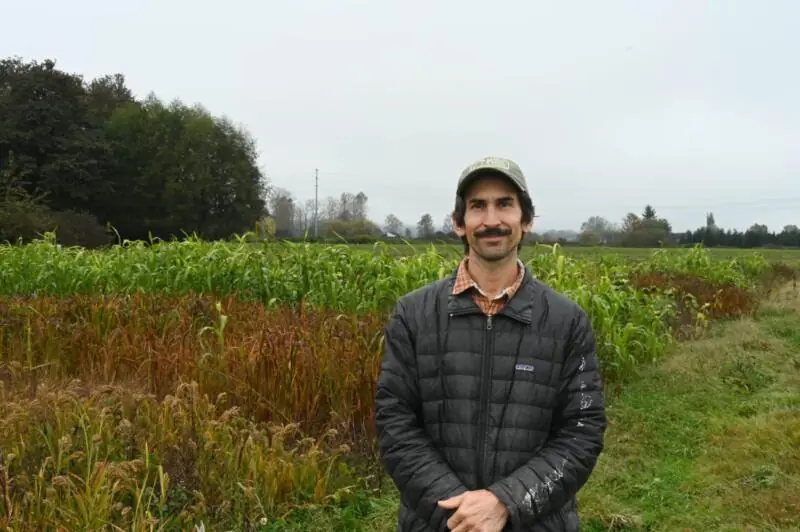National Park in Chilean Patagonia Joins Prestigious ‘Green List’ of Protected Areas – The Pew Charitable Trusts

Report on Cerro Castillo National Park’s IUCN Certification and Alignment with Sustainable Development Goals
Introduction: A Milestone for Conservation and Sustainable Development
On September 23, Chile’s Cerro Castillo National Park achieved a significant milestone by becoming the first protected area in the country and the Southern Cone to be included on the International Union for Conservation of Nature’s (IUCN) Green List of Protected and Conserved Areas. This international recognition highlights the park’s successful management and its substantial contribution to achieving multiple Sustainable Development Goals (SDGs), particularly those concerning biodiversity, partnerships, and sustainable economic growth.
Advancing SDG 15: Life on Land
The certification of Cerro Castillo National Park is a direct reflection of progress towards SDG 15, which aims to protect, restore, and promote the sustainable use of terrestrial ecosystems and halt biodiversity loss.
Biodiversity Conservation and Ecosystem Protection
- Ecological Significance: The park encompasses a diverse range of terrains, including glaciers, lakes, snowy peaks, and forests, which are vital for ecological balance.
- Protection of Threatened Species: It serves as a critical habitat for one of the last populations of the endangered south Andean deer (huemul), as well as pumas and guanacos. This conservation effort directly addresses SDG Target 15.5, which calls for urgent action to end the poaching and trafficking of protected species and prevent the extinction of threatened species.
Commitment to International Management Standards
The IUCN Green List, established in 2012, recognizes sites that meet rigorous global standards for effective management and governance. By achieving this certification, Cerro Castillo demonstrates a commitment to:
- Good governance and equitable management.
- Sound design and planning.
- Effective implementation of conservation measures.
- Successful conservation outcomes.
This aligns with SDG Target 15.1, ensuring the conservation and sustainable use of terrestrial ecosystems in line with international agreements.
Fostering SDG 17: Partnerships for the Goals
The successful accreditation process, initiated in 2021, exemplifies the power of multi-stakeholder collaboration as outlined in SDG 17. This achievement was the result of a coordinated effort among diverse entities.
Key Implementing Partners
- Government: Chile’s national forest service and protected areas agency (CONAF).
- Academia: The Universidad Austral de Chile’s Austral Patagonia Program.
- Non-Governmental Organization: The Pew Charitable Trusts, which provided technical assistance.
This partnership model is crucial for mobilizing the resources, expertise, and political will necessary to implement large-scale conservation projects, directly supporting SDG Target 17.17 on encouraging effective public, public-private, and civil society partnerships.
Contributions to Broader Sustainable Development
The park’s international recognition extends its impact beyond direct conservation, contributing to other key SDGs.
Promoting Sustainable Tourism and Economic Growth (SDG 8)
As a popular tourist destination, the park’s enhanced status promotes sustainable tourism. This supports local economies and creates decent work, aligning with SDG Target 8.9, which aims to devise and implement policies to promote sustainable tourism that creates jobs and promotes local culture and products.
Preserving Natural Heritage and Climate Resilience (SDG 11 & SDG 13)
The protection of Cerro Castillo’s unique landscape and biodiversity contributes to SDG Target 11.4, which seeks to strengthen efforts to protect and safeguard the world’s cultural and natural heritage. Furthermore, the conservation of its verdant forests and ecosystems plays a role in climate action (SDG 13) by sequestering carbon and enhancing ecosystem resilience.
Conclusion: A National and Regional Model for Conservation
The inclusion of Cerro Castillo National Park on the IUCN Green List is a testament to Chile’s leadership in conservation. The success, driven by the dedicated work of park staff and collaborative partnerships, sets a benchmark for protected area management. With three other protected areas in Chile, including Vicente Pérez Rosales National Park, also candidates for the Green List, the nation continues to demonstrate a strong commitment to integrating biodiversity conservation with the broader 2030 Agenda for Sustainable Development.
SDGs Addressed or Connected
SDG 15: Life on Land
- The article is centered on the conservation of Cerro Castillo National Park, a terrestrial ecosystem. It highlights the protection of its diverse terrain, including “glaciers and shimmering lakes to snowy peaks and verdant forests.” The core theme is the conservation of biodiversity, specifically mentioning fauna like the “endangered south Andean deer,” “puma,” and “guanaco.” This directly aligns with SDG 15’s goal to protect, restore, and promote the sustainable use of terrestrial ecosystems and halt biodiversity loss.
SDG 17: Partnerships for the Goals
- The article explicitly details a multi-stakeholder collaboration that was crucial for achieving the park’s certification. It states that Chile’s path to accreditation involved “a group of implementing partners: Chile’s national forest service and protected areas agency (CONAF), the Universidad Austral de Chile’s Austral Patagonia Program, and The Pew Charitable Trusts.” This partnership between government, academia, and a non-governmental organization exemplifies the collaborative approach promoted by SDG 17 to achieve sustainable development.
SDG 8: Decent Work and Economic Growth
- An indirect connection to SDG 8 is made through the mention of tourism. The article opens by stating that Cerro Castillo National Park “has become one of Chilean Patagonia’s most popular tourist destinations.” By enhancing the park’s conservation status and international recognition through the IUCN Green List, its value for sustainable tourism is increased. This supports the creation of jobs and economic growth in the region, which is a key aspect of SDG 8.
Specific Targets Identified
Targets under SDG 15: Life on Land
- Target 15.4: By 2030, ensure the conservation of mountain ecosystems, including their biodiversity. The article focuses on Cerro Castillo National Park, which is named for its “rugged, castle-like peaks” and is a mountain ecosystem. The entire effort to gain IUCN Green List certification is a direct action towards conserving this mountain ecosystem and its biodiversity.
- Target 15.5: Take urgent and significant action to reduce the degradation of natural habitats, halt the loss of biodiversity and, by 2020, protect and prevent the extinction of threatened species. The article directly addresses this target by highlighting that the park is “home to one of the last populations of huemuls, the endangered south Andean deer.” The conservation efforts and improved management standards are aimed at protecting this threatened species and its habitat.
Targets under SDG 17: Partnerships for the Goals
- Target 17.16: Enhance the global partnership for sustainable development, complemented by multi-stakeholder partnerships that mobilize and share knowledge, expertise, technology and financial resources. The successful collaboration between CONAF (government), the Universidad Austral de Chile (academia), and The Pew Charitable Trusts (civil society) to achieve the IUCN certification is a clear example of such a multi-stakeholder partnership mobilizing expertise and technical assistance.
Targets under SDG 8: Decent Work and Economic Growth
- Target 8.9: By 2030, devise and implement policies to promote sustainable tourism that creates jobs and promotes local culture and products. The article’s reference to the park as a “popular tourist destination” implies the importance of sustainable tourism. Achieving a prestigious conservation certification like the IUCN Green List is a policy outcome that enhances the park’s attractiveness for sustainable tourism, thereby supporting this target.
Indicators Mentioned or Implied
Indicators for SDG 15: Life on Land
- Coverage of protected areas meeting international standards: The central point of the article is that Cerro Castillo National Park became the “first protected area in both the country and the Southern Cone to be included on the International Union for Conservation of Nature’s (IUCN’s) Green List.” This certification serves as a direct indicator that the park meets rigorous international standards for management and conservation, which is a qualitative measure of the effectiveness of protection.
- Conservation status of threatened species: The article mentions the park’s role in protecting the “endangered south Andean deer.” The status of this species on the IUCN Red List is a key biodiversity indicator. The park’s conservation efforts, which led to the Green List recognition, are aimed at improving the long-term survival prospects of this species, thus impacting this indicator.
Indicators for SDG 17: Partnerships for the Goals
- Existence and success of multi-stakeholder partnerships: The article describes the successful outcome of the partnership between CONAF, Universidad Austral de Chile, and The Pew Charitable Trusts. The achievement of the Green List certification is a tangible result and an indicator of an effective partnership in action, demonstrating successful mobilization of resources and expertise towards a common conservation goal.
Summary Table of SDGs, Targets, and Indicators
| SDGs | Targets | Indicators |
|---|---|---|
| SDG 15: Life on Land |
|
|
| SDG 17: Partnerships for the Goals |
|
|
| SDG 8: Decent Work and Economic Growth |
|
|
Source: pew.org
What is Your Reaction?
 Like
0
Like
0
 Dislike
0
Dislike
0
 Love
0
Love
0
 Funny
0
Funny
0
 Angry
0
Angry
0
 Sad
0
Sad
0
 Wow
0
Wow
0















































/environment-climate-change-and-health-(ech)/water-sanitation-hygiene-and-health-(wsh)/landfill-tuvalu-36092.tmb-1200v.jpg?sfvrsn=5c21fe40_1#)


.jpg.webp?itok=0ZsAnae9#)

























